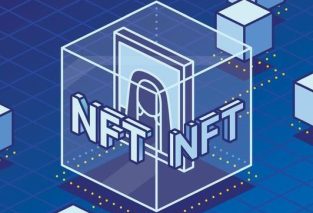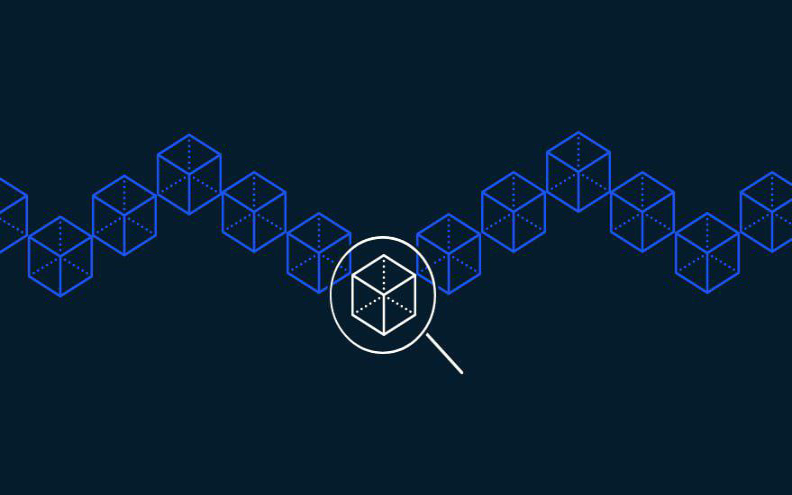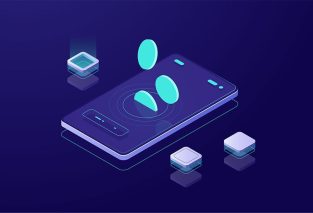From Static Pages to Intelligent Networks
The World Wide Web has undergone a remarkable journey since its inception. Transforming from simple static pages to dynamic, interactive platforms that have reshaped the way we connect, share, and access information.
The evolution of the web can be traced through 3 key phases each phase represents a significant milestone in the development of the internet:
- Web 1.0
- Web 2.0
- The Emerging Web 3.0.
Web 1.0, The “Read-Only” Web:
Web 1.0, which existed from 1989 to 2005, represents the earliest version of the Internet. It marked the initial stage of a continuously evolving medium that eventually transformed into a versatile platform with diverse functionalities. During this era, a small group of individuals created web pages and content, catering to a larger audience seeking information and facts. The early Internet primarily consisted of interconnected web pages accessed through hyperlinks, lacking the visual elements and interactive features we encounter today. Experts often refer to this phase as the “read-only” web, where users had limited interactivity.
Static refers to fixed or unchanged content, without any dynamic elements or interactivity. A static website typically consists of HTML files that are pre-designed and delivered to the user’s browser as they are, without any server-side processing or database interactions. It does not change based on user input or actions. For example, a static website for a business might display information about the company, its products or services, and contact details, but the content remains the same regardless of who accesses it or when they do so; Suitable for displaying fixed information that doesn’t require frequent updates or user interaction.
Web 1.0 Aims:
- To enable information search and consumption.
- To provide easily accessible information to a wide audience.
- To remove geographical restrictions associated with traditional businesses
- To present products to potential customers globally, akin to catalogs or brochures.
- To offer exposure and visibility to businesses and their offerings.
Web 2.0 , The Participative Social Web
The term “Web 2.0” originated to describe a shift in the Internet’s nature, emphasizing active user engagement and content contribution.
Rather than being passive consumers, users were encouraged to actively participate and share their thoughts, perspectives, and opinions through social media platforms. Web 2.0 signifies a change in how the internet is utilized in the 21st century, fostering increased information sharing and interconnectedness among users.
Web 2.0 does not refer to specific technical upgrades but represents a new era where users play an active role in the online experience. This shift facilitated the ability to publish articles, leave comments, and create user accounts on various websites, leading to enhanced participation. Web 2.0 also gave rise to web applications, self-publishing platforms like WordPress, and the proliferation of social media sites.
Prominent examples of Web 2.0 sites include Wikipedia, Facebook, Twitter, and various blogs.
Let’s discuss some of its features:
User-Centric Design:
It introduced a focus on user-centric design principles, aiming to enhance the user experience. Websites and applications became more intuitive, visually appealing, and responsive, taking into account user feedback and preferences. User interface design and usability testing became integral to creating engaging digital experiences.
Social Networking and Collaboration:
It facilitated the growth of social networking platforms. It brought about a significant shift in online communication and collaboration, enabling users to share ideas, engage in discussions, and collaborate on projects. Social networking sites fostered virtual communities and facilitated the formation of online relationships.
Democratization of Content Creation:
It empowered individuals to create and publish their content easily. Blogging platforms emerged, enabling anyone to share their thoughts, expertise, and experiences with a wide audience. This democratization of content creation challenged traditional media gatekeepers and led to the rise of influential bloggers and content creators.
User-Generated Reviews and Ratings:
Its platforms allowed users to provide reviews, ratings, and feedback on products, services, and experiences. This user-generated content became a valuable resource for others, influencing purchasing decisions and shaping public opinion. Examples include review sites like Yelp and TripAdvisor.
Mobile Revolution:
Web 2.0 coincided with the proliferation of smartphones and the mobile revolution.
Data Sharing and Open APIs:
It encouraged data sharing and the use of open APIs (Application Programming Interfaces). This enabled developers to create innovative applications by integrating and leveraging data from multiple sources
Personalization and E-commerce:
Web 2.0 platforms revolutionized e-commerce by leveraging user data and preferences to deliver personalized experiences. With the integration of recommendations, tailored content, and targeted advertising, user engagement and relevance were significantly enhanced. This transformation reshaped the e-commerce landscape, giving rise to popular online marketplaces like Amazon and eBay. Users were empowered to conveniently buy and sell products and services, tapping into the power of user-generated content, reviews, and recommendations.
Web-Based Productivity Tools:
It also saw the rise of web-based productivity tools and applications. Cloud-based storage and collaboration platforms, such as Google Docs and Dropbox, allowed users to create, edit, and share documents, spreadsheets, and files seamlessly.
Enhanced Graphics and Multimedia:
Web 2.0 brought advancements in graphics and multimedia capabilities. Websites began incorporating richer visuals, animations, videos, and interactive elements, enhancing the overall user experience. This shift enabled more engaging and immersive content presentation.
Scalability and Robust Infrastructure:
Its platforms focused on building scalable and robust infrastructure to handle the increasing volume of users and content. Technologies such as cloud computing, content delivery networks (CDNs), and distributed systems helped ensure reliable and efficient delivery of web content.
Social Bookmarking and Tagging:
Web 2.0 popularized social bookmarking and tagging, allowing users to organize and categorize online content based on their preferences.
Personalization and Recommendation Systems:
Its platforms leveraged user data and machine learning algorithms to provide personalized experiences and recommendations. Through user behavior analysis, these systems could suggest relevant content, products, or services based on individual preferences and patterns.
Collaborative Editing and Crowdsourcing:
It introduced collaborative editing tools and crowdsourcing platforms, enabling users to collaborate on content creation and improvement. Wikipedia is a prime example of how crowdsourcing and collaborative editing transformed the encyclopedia model, allowing users worldwide to contribute and edit articles.
Web Analytics and User Tracking:
Web 2.0 platforms made extensive use of web analytics to track user behavior, engagement, and conversion metrics. This data-driven approach allowed businesses to gain insights into user preferences, optimize their offerings, and tailor their marketing strategies accordingly.
Key Points:
- It offers free information sorting, allowing users to retrieve and classify data collectively
- It contains dynamic content that responds to the user’s input
- It employs Developed Application Programming Interfaces (API)
- Podcasting
- Social media
- Tagging
- Blogging
- Commenting
- Social networking
- Web content voting
Now that we covered Web 1.0 and Web 2.0, let’s move on to Web 3.0
Web 3.0 :
Web3 is the emerging third generation of the Internet, representing a transformative phase that goes beyond static web pages and traditional online interactions. It envisions a future where websites and applications are not only capable of processing information but also harnessing the power of AI systems with more human-like intelligence. Web3 integrates technologies such as machine learning, big data analytics, decentralized ledger technology (DLT), and other emerging innovations to enable smarter and more interactive online experiences for users. In addition to processing information, Web3 also emphasizes the utilization of decentralized and peer-to-peer networks, enabling greater user control, privacy, and data ownership. It strives to overcome the limitations of centralized entities by leveraging distributed consensus mechanisms, cryptographic security, and transparent governance models. Web3 fosters an ecosystem where individuals have increased autonomy, can participate in decision-making processes, and benefit from enhanced trust and verifiability.
The Importance And Core Ideas Of Web3
Decentralization:
Instead of being controlled by centralized entities, the ownership, and control of Web3 are distributed among its builders and users. Decentralization fosters a more resilient and censorship-resistant web, where no single entity can dictate or control the network moreover it promotes transparency.
Permissionless:
Web3 provides equal access to all participants, allowing anyone to join and participate in the network without exclusion. Permissionless nature encourages innovation, collaboration, and equal opportunities for individuals, irrespective of their geographical location or background. It empowers users to engage directly with applications and services, reducing reliance on intermediaries.
Native Payments:
Web3 utilizes cryptocurrencies for spending and sending money online, replacing traditional banking infrastructure. Native payments enable borderless transactions, faster settlements, and reduced transaction fees compared to traditional banking systems. It also opens up opportunities for new economic models, such as micropayments and token-based ecosystems.
Trust:
Web3 operates using incentives and economic mechanisms rather than relying on trusted third parties. Trust is achieved through the use of blockchain technology and smart contracts. It enhances security, audibility, and accountability in transactions and interactions. It also enables the creation of decentralized applications and platforms, fostering transparency and reducing the risk of fraud or manipulation.
Interoperability, Open-source, and Collaborative Development:
Interoperability enables the exchange of value and information across various networks, facilitating collaboration, innovation, and the creation of comprehensive ecosystems. Web3 encourages open-source development and collaborative efforts, fostering the sharing of code, ideas, and standards. Open-source development promotes transparency, community-driven initiatives, and collective problem-solving. It facilitates the rapid evolution and improvement of Web3 technologies through the contributions of a diverse developer community.
Programmable Assets and Smart Contracts:
These enable automation, efficiency, and self-executing agreements in various sectors, such as finance, supply chain, and governance. They provide the foundation for decentralized applications and innovative business models.
Data Sovereignty:
Web3 emphasizes individuals’ ownership and control over their personal data, allowing them to decide how it is used, stored, and shared. It empowers users to protect their privacy and have greater agency over their digital identities. It encourages the development of privacy-enhancing technologies and gives users the ability to revoke access to their data.
What Web 3.0 presents and will add to our world?
Web3 is an evolved form of web technology that enables users to create, share, and connect content through search and analysis. It’s a semantic web; It operates by understanding the meaning of words rather than relying solely on numbers and keywords.
The Semantic Web is an extension of the traditional web that focuses on adding meaning and structure to data, enabling better understanding and interpretation by both humans and machines.
Web3 and the Semantic Web have a relationship of synergic and enhancement. The Semantic Web adds meaning and structure to data, making it more understandable for humans and machines. Web3, as the next generation of the internet, emphasizes decentralization and user control through blockchain technology. By incorporating semantic technologies, Web3 can benefit from improved data interoperability and automated reasoning.
By integrating Artificial Intelligence (AI) and Machine Learning (ML), along with Natural Language Processing (NLP), Web3 empowers computers to become more intelligent and responsive to user needs. It facilitates seamless connectivity between multiple devices and applications through the Internet of Things (IoT), enabled by semantic metadata. This allows users to access the internet from anywhere, at any time, without relying on a computer or smart device. Web3 also grants users the freedom to engage in public or private interactions without the need for intermediaries, ensuring data is trustworthy and not exposed to unnecessary risks.
Along with all the advantages, there will always be disadvantages.
Complexity:
Web 3.0 technologies require specialized knowledge, posing challenges for users and developers unfamiliar with blockchain, smart contracts, and decentralized networks.
Adoption and User Experience:
Transitioning from user-friendly Web 2.0 platforms to the decentralized interfaces of Web 3.0 can be challenging, hindering widespread adoption.
Regulatory and Legal Concerns:
The decentralized nature of Web 3.0 creates regulatory challenges, including data privacy, security, intellectual property rights, and jurisdictional disputes.
Energy Consumption:
Some Web 3.0 technologies, like blockchain, have high energy consumption, raising concerns about environmental impact and sustainability.
Building and maintaining decentralized applications and platforms in Web 3.0 may require additional infrastructure costs.
Developing for Web 3.0 may involve learning and development costs due to the specialized knowledge and skills required in blockchain technology and decentralized systems.
In conclusion, the evolution of the World Wide Web from Web 1.0 to Web 3.0 represents a journey of constant innovation and transformation. With Web 3.0, we stand at the cusp of a new era, one that promises decentralized networks, increased user control, and intelligent experiences.




